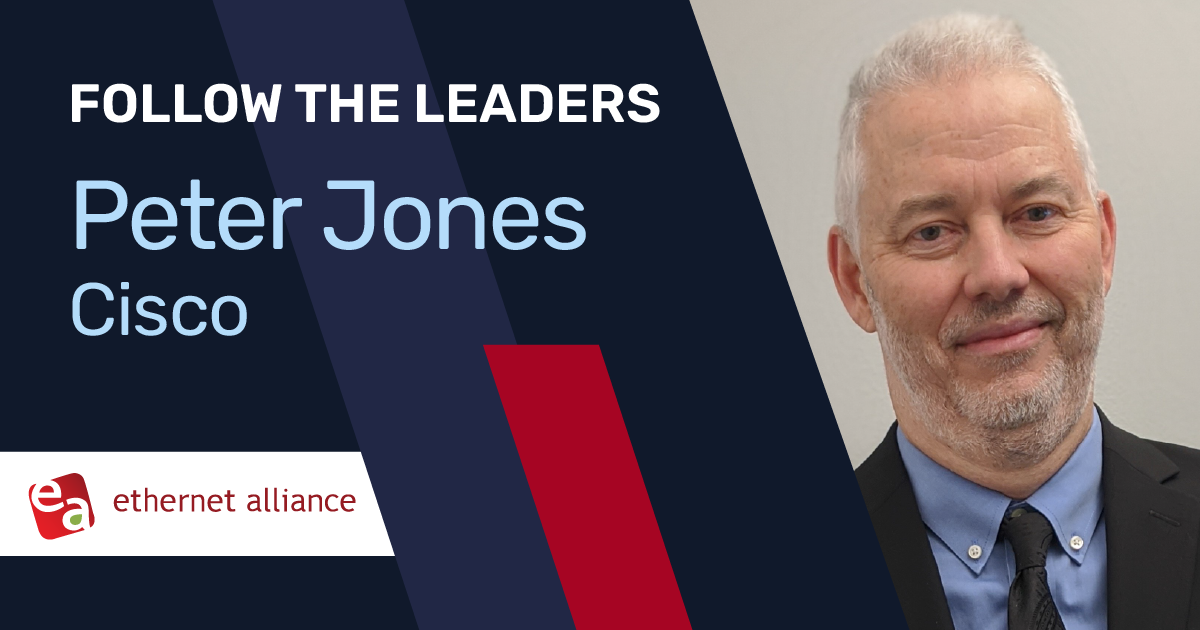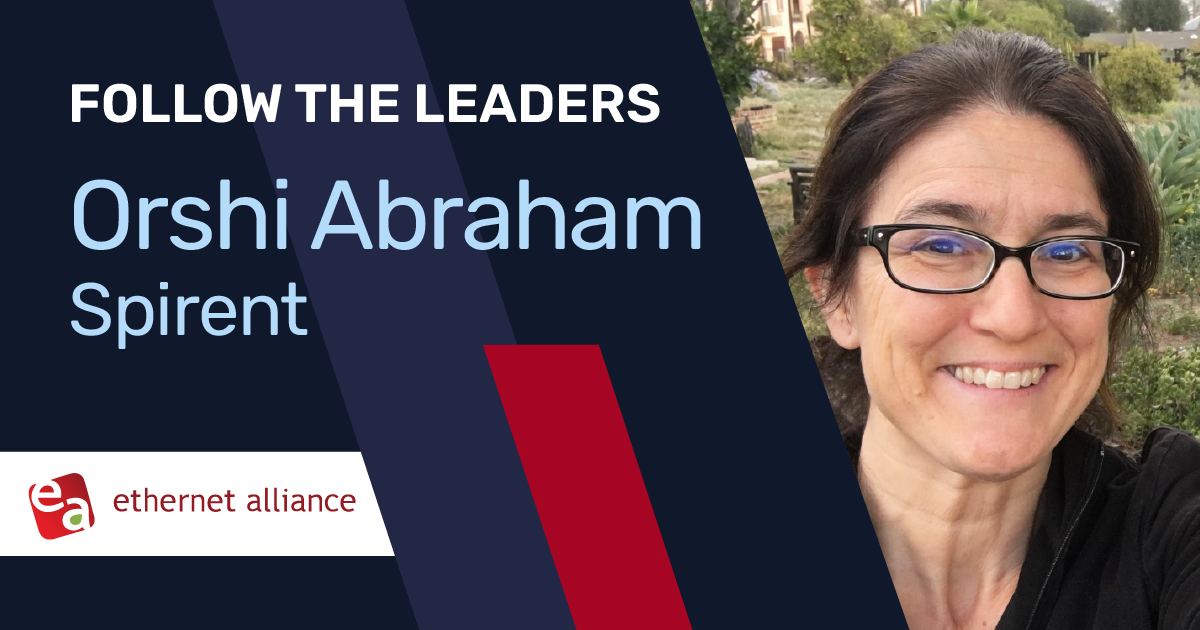Follow the Leaders: Sam Johnson
As the industry voice of Ethernet, the Ethernet Alliance serves as a collaborative melting pot for member companies from across the Ethernet ecosystem. Dedicated to advancing Ethernet and related technologies, members work together in support of critical activities, such as bringing Ethernet standards to the marketplace, incubating new technologies, and facilitating interoperability testing.
As part of the Follow the Leaders series, we’ve been introducing the recognized Ethernet experts, practitioners, and visionaries that make up our leadership team. In this latest installment, we sit down with one of our newest members, Sam Johnson of Intel, Co-Chair of our High-Speed Networking Subcommittee.
Improving Interoperability Across the Ethernet Ecosystem
Q | Please tell us a little about yourself and your work at Intel?
I’ve spent most of my life in beautiful Oregon and now reside just outside Portland with my wife and two daughters. I received my B.S. in Electrical and Computer Engineering from Oregon State University (go Beavs!) and have always enjoyed the problem-solving and hardware aspects of computer engineering.
I joined Intel’s LAN Access Division (now known as the Ethernet Products Group or EPG) on the Silicon Applications Engineering team, which focused on Ethernet hardware debug and customer enablement. 10 gigabit (10G) Ethernet was just emerging at the time, and I became the primary Ethernet link debugger for our first 10G serial Ethernet Controller.
After spending six years debugging every creative way that things could break, I could see that it was only going to get more complicated as we moved into higher speeds and new technologies, so I took an opportunity to take what I had learned and help reinvent how our products manage the Ethernet link. I moved to a development team and helped architect and engineer a new Link Management function that controls the Ethernet hardware in Intel’s EPG products, developing innovative approaches to PHY configuration and connected module management, and most importantly blinking those LEDs when the link is up.
I later returned to the applications world and had the opportunity to build a team of amazing engineers to support this new infrastructure. Our role has grown significantly, expanding to encompass supporting the link and PHY layers across the EPG product portfolio, performing multi-vendor interoperability testing, delivering customized Ethernet solutions for customers, and lots and lots of debug. And I still stay busy defining new features and crafting implementation details for link behavior in our current and future Ethernet products.
Q | Your work originally focused on 10GbE. Today, we’re beginning to see deployment of 400G links, with 800G, 1.6T, and beyond already in the works. What key factors are driving this march toward high-speed networking (HSN)?
Technology evolves at breakneck speeds and Ethernet is no different. Ethernet data rates are the key to unlocking the full potential of connected devices, whether you’re talking data centers or smart cars. With today’s technology-based, hyperconnected world, the number, scope, and diversity of Ethernet applications are limitless.
HSN advancements keep us ahead of the game and ensure that we don’t become a bottleneck. Then there’s the matter of cost, power, and density, and HSN delivers on all three fronts. Of course, it’s a lot more efficient to have one 800G connection than eighty 10G connections carrying the same amount of data.
Q | As the new Ethernet Alliance HSN Subcommittee Co-Chair, what’s at the top of your to-do list?
Modules, modules, and more modules. One of the HSN Subcommittee’s principal goals is improving interoperability across the Ethernet ecosystem. In recent years, one of the most common issues my team has seen comes from interoperating with pluggable modules and cables. As an industry, we invest hugely in electrical conformance. We thoroughly assess the electrical aspect of each piece of the Ethernet link including modules, yet we see inconsistent module functional behavior and memory map contents, and a lack of compliance enforcement in this area.
I believe one of the most significant, immediate impacts the HSN Subcommittee can have is to develop standardized compliance testing around module functionality and the values programmed in the module’s EEPROM memory map. I’d like to see us incorporate module/cable compliance and conformance testing into the Ethernet Alliance HSN plugfests so that we can address these issues earlier and spark greater collaboration with module and cable vendors. We’re at a pivotal point in time, as many vendors are transitioning devices from the SFF (small form factor) standards to CMIS (Common Management Interface Specification). Such shifts can be disruptive, but the HSN subcommittee is uniquely positioned to smooth this transition.
Q | The latest Ethernet Alliance HSN Plugfest was one of the largest to-date; what is the importance of these types of interoperability events?
Plugfests deliver enormous value by aligning different vendor’s device behavior with emerging technologies. End users typically have limited interest in Ethernet’s deep, dark complexities. What they do expect though, is that when they plug a NIC into a switch, the link comes up with no questions asked. These critical interoperability events turn those expectations into reality by allowing participants to resolve issues before devices are ever seen by the customer. Furthermore, they influence the direction of the leading edge of Ethernet technologies and reveal trends that may impact device development decisions.
Q | Which sectors and applications are likely to benefit the most from HSN, and why? For example, is it data centers, distributed storage, HPC, industrial, or all of the above?
At my core, I’m a Layer 1 guy, and I’m quite certain that everything happening above the PHY is black magic. Whether our device is in a server, a supercomputer, or a microwave, my job ends when that Ethernet link is up. It’s up to the rest of the Ethernet magicians out there to figure out what happens with it next!
Q | What’s one fact about yourself that you’d like to share, or anything else that you want us to know about you?
As much as I enjoy the work that we do, I try to spend most of my free time away from computers. It’s been said that my hobby is collecting other hobbies, so hit me up at the next Ethernet Alliance HSN Plugfest and we can talk music, fishing, mountain biking, woodworking, backpacking, rock climbing, snowboarding, traveling, cooking, or of course, the fine art of beer drinking.




